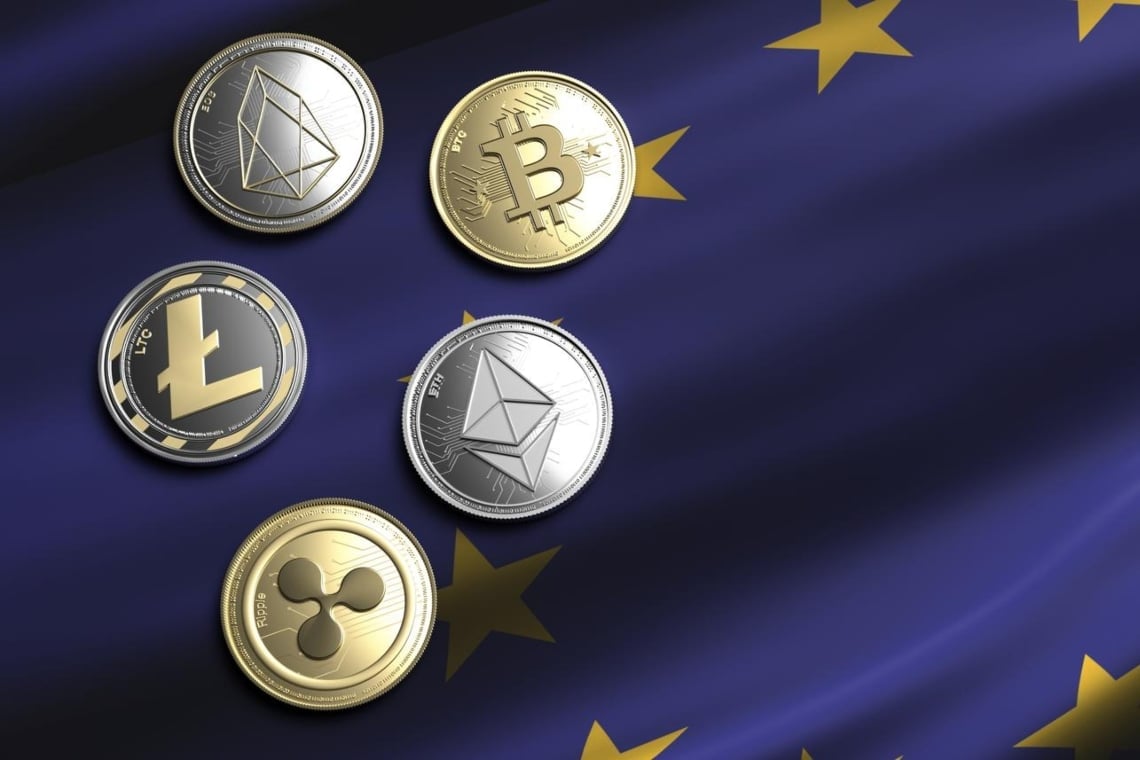As now previously announced in several news items, a regulatory bundle has been included in the draft to the budget law that finally deals with the tax treatment of crypto or, to use the expression employed in the legislative proposal, crypto assets.
However, this is not the only legislative news on crypto. Let’s recap.
We start with the draft budget law: the good news is that the prospect of having a clear regulatory framework now becomes concrete, compared to the situation of vagueness, also fueled by interpretative acts of the Italian Tax Agency, which were far from clear and sometimes contradictory.
The not-so-good news is that the text of the bill approved by the Council of Ministers, has a number of aspects that would need substantial clarification and refinement, without which the legislation risks not bearing the hoped-for fruits, especially if the intended objective is to facilitate and encourage the emergence of taxable matter.
Now, the bill has recently embarked on the parliamentary approval process and something like 3,000 amendments have already been submitted, mostly by opposition MPs.
What will come out of this path remains to be seen, but let’s try to go through the aspects on which it would be essential to take action and how it would be useful for future legal provisions to be corrected.
Summary
The news on the tax treatment of crypto
Let’s start with the taxation regime: the creation of a substitute tax that is triggered in the case of capital gains exceeding 2,000.00 euros is fine, but first of all there is a problem related to the basis of calculation.
In fact, since there are no official prices of crypto-assets, it may be problematic to be able to establish the value of capital gains based on ordinary valuation criteria in an objective way that leaves no room for possible doubt.
The solution could be to offer the taxpayer the option of quantifying the basis for calculating the differential between the value attributed to the crypto-assets at the time they were acquired and the value recognized at the time the capital gains were earned, through a sworn expert opinion rendered by an accountant, expert accountant.
The tax authority could always refute the appraisal if it found it incorrect for some reason, but at that point it would be burdened with the burden of proving its erroneousness or unreliability.
This solution would have a number of advantages, including providing greater margins of certainty for the taxpayer, thus a practical relief and ultimately an incentive to meet tax obligations.
And here we come to another crucial point: the regulatory framework, as the bill is written today, does not refer specifically to virtual currencies (as defined by Legislative Decree 231/2007), but more generically to what it refers to as crypto-assets. This implies that the cauldron of virtual assets potentially capable of generating taxable capital gains could include not only tokens that do not perform functions of a financial nature, but in the abstract, also NFTs.
The interpretation of NFTs
Now, the way the provisions are written, a taxpayer who does not professionally engage in the activity of an art dealer, if he or she earns capital gains from the resale of a physical work of art, is not subject to any form of taxation.
Paradoxically, however, if the work of art is enclosed in a cryptographic file, based on the reading of the rule, in the case of capital gains worth more than 2,000.00 euros he would be subject to pay tax at 26%.
It would be most appropriate, therefore, for the legislation to be corrected by better delimiting the type of digital assets for which a capital gain subject to taxation can be generated.
Another crucial issue is that of monitoring obligations. The regulations state in general terms that crypto-assets must be declared in the RW Form. They do not clarify, however, whether all of them should be declared, always and regardless, or only those whose private keys are held abroad (because, for example, they are held on custodial wallets of foreign platforms).
A more clearly and explicitly worded provision to this effect would be of great help and remove any doubt. This is beyond the fact that it does not make much sense to require the declaration as foreign assets of digital assets whose private keys (and thus the relative ability to dispose of them) are located in Italy.
And again, still on the subject of monitoring, the generic reference to crypto-assets risks triggering the obligation to declare in the RW form also NFTs and other digital assets, such as certain types of tokens, that have no financial nature.
It would make much more sense to impose such declaration obligations only on virtual currencies with eminent function as means of payment.
One can argue at length about the choices of the substitute tax rates at 26% on capital gains and 14% for the emergence of assets held as of 1 January 2023, and whether it is very unfair to subject fully deregulated assets, whose financial risk rests entirely on the taxpayer, to the same taxation regime as capital income in supervised and regulated areas.
The protection of the saver
It is worth recalling that those who invest in digital assets to date cannot in fact count on any form of protection, while those who operate in even highly speculative financial sectors can always count on a wide range of regulatory, administrative and judicial safeguards
This, however, takes us to a plane that is no longer that of legislative technique, but of political choices.
In any case, let it be emphasized that it would be very reasonable for due consideration to be given to the fact that a less burdensome tax regime could avoid suffocating in the cradle in Italy a market sector, which may arouse mistrust, but still generates investment, jobs and opportunities for technological development that other countries are riding hard on and enjoy a real vantage point today.
Turning to the European regulatory front, agreement was reached in the Council of the European Union in recent days on a new AML regulation and a new AML directive that would replace Directive 2015/849/EU (the Fourth AML Directive, itself amended by the Fifth).
Also included in the framework of what will become the European AML regulatory framework will be the European regulation on the transfer of funds (TFR), which has already reached an advanced stage in its adoption path.
Thus, as reported in the press release issued in recent days, the entire package will include:
- a regulation establishing a new EU Anti-Money Laundering Authority (AMLA), equipped with incisive sanctioning powers;
- the Funds Transfers Regulation, which invests cryptocurrency transfers to make them fully traceable; and
- a regulation on anti-money laundering obligations within the private sector
- a directive on anti-money laundering mechanisms
Among the key points of the regulation and directive are the establishment of a European limit (equal to 10,000 euros) on cash transactions, a new regulation of access to beneficial owner information for those with legitimate interests, and the introduction of ad hoc regulation of due diligence procedures for transactions in virtual currencies with a countervalue of more than 1,000 euros.
This new regulatory framework, therefore, aims to extend to the entire sector of cryptocurrency service providers the customer due diligence requirements already in place for the roster of current obligated entities, such as banking and financial intermediaries, by also imposing provenance verifications, resulting in reporting requirements for transactions of €1,000 or more, and there is also talk of “specific enhanced due diligence measures regarding cross-border correspondent relationships for cryptocurrency service providers.”
About cash transactions, however, member states will be allowed to set a lower limit than the EU-wide limit of 10,000 euros.
Again, it is intended to provide for the automatic inclusion of third countries on the lists of the Financial Action Task Force (FATF, the international reference body on anti-money laundering standards) in the corresponding EU lists.
The EU lists
There will, therefore, be two EU lists: a “black list” and a “gray list,” mirroring those of the FATF. This will prevent the Commission from repeating the assessments already made by the FATF by accelerating the inclusion of third countries on the lists and the application by the EU of measures proportionate to the risks presented by the country.
In the package of rules, there will be provisions on beneficial ownership, which, among other things, are intended to implement the rulings of the Court of Justice of the EU made in its judgment of 22 November 2022 in Joined Cases C-37/20 and C-601/20, which imposed significant restrictions on access to beneficial ownership data, deeming the provisions of Art. 30(5), first subparagraph (c), Dir. (EU) 2015/849 (4th AML Directive), as amended by Dir. (EU) 2018/843 (5th AML Directive), which allowed public access, disproportionate and unnecessary.
Having agreed on the position of the member states within the Council, the next step is to initiate the so-called trialogue procedure to agree on a shared text between the Council, Commission and Parliament.
Of course, this is a set of rules all in the making, which await several further steps before reaching the point of explaining their effectiveness.
Therefore, once again, we need to wait for the final texts to be able to make more analytical considerations, but the scenario that is emerging is one of increasing ubiquity of controls and even measures that always treat the crypto sector with suspicion and distrust.
Meanwhile, however, it was not cryptocurrencies that were seized from the homes and offices of members of the European Parliament suspected of corruption in the so-called Qatargate. It was fiat currency.




